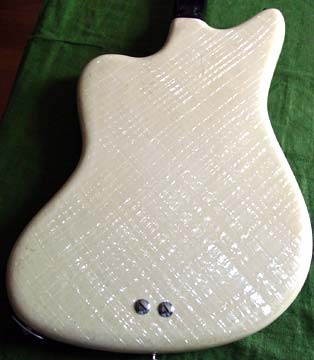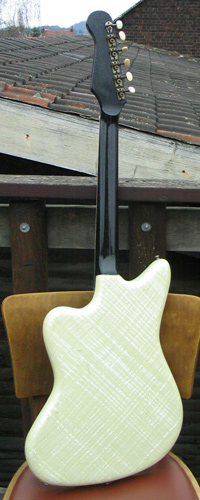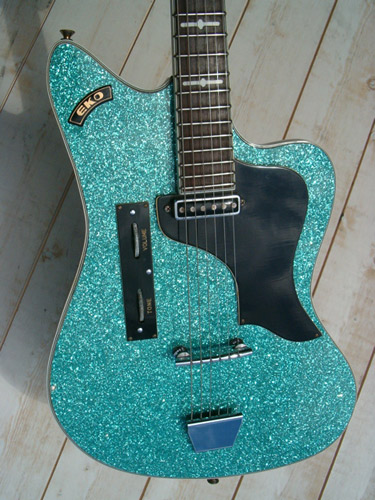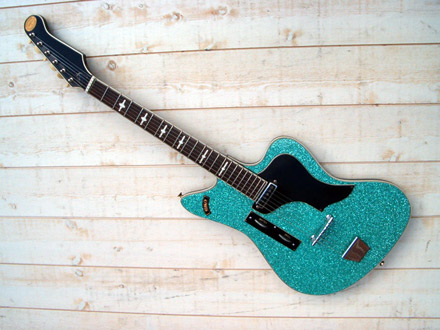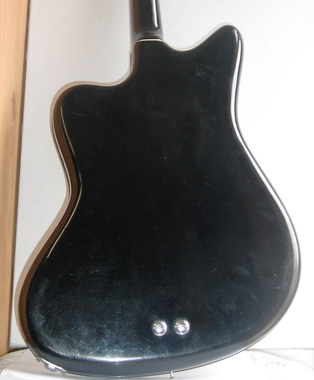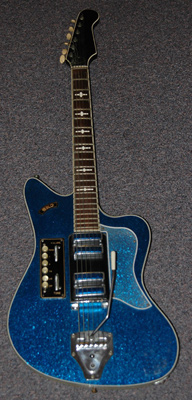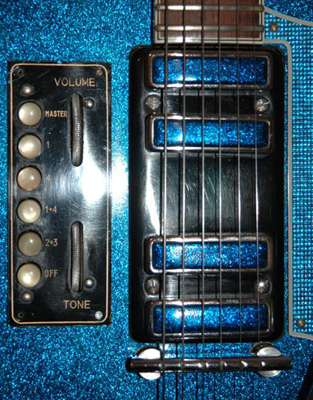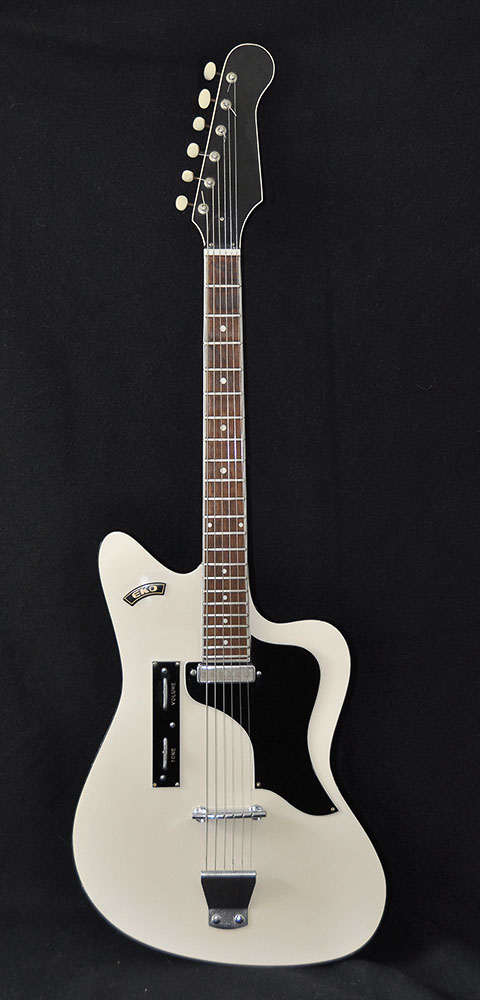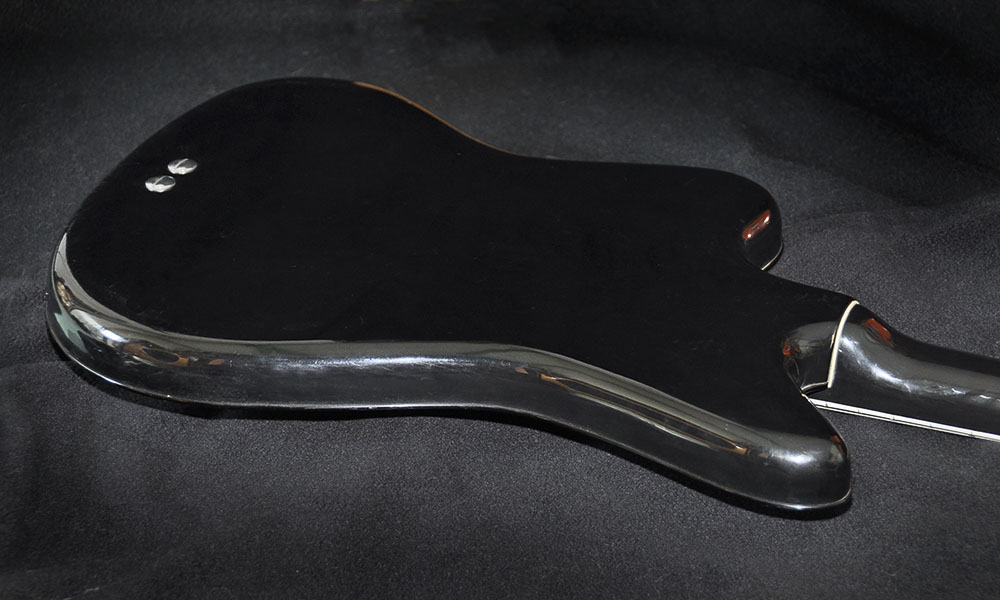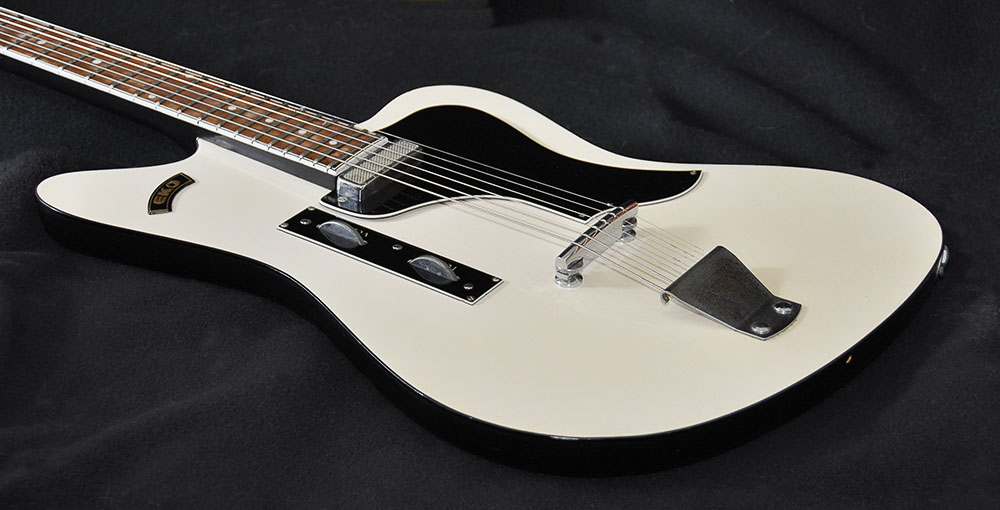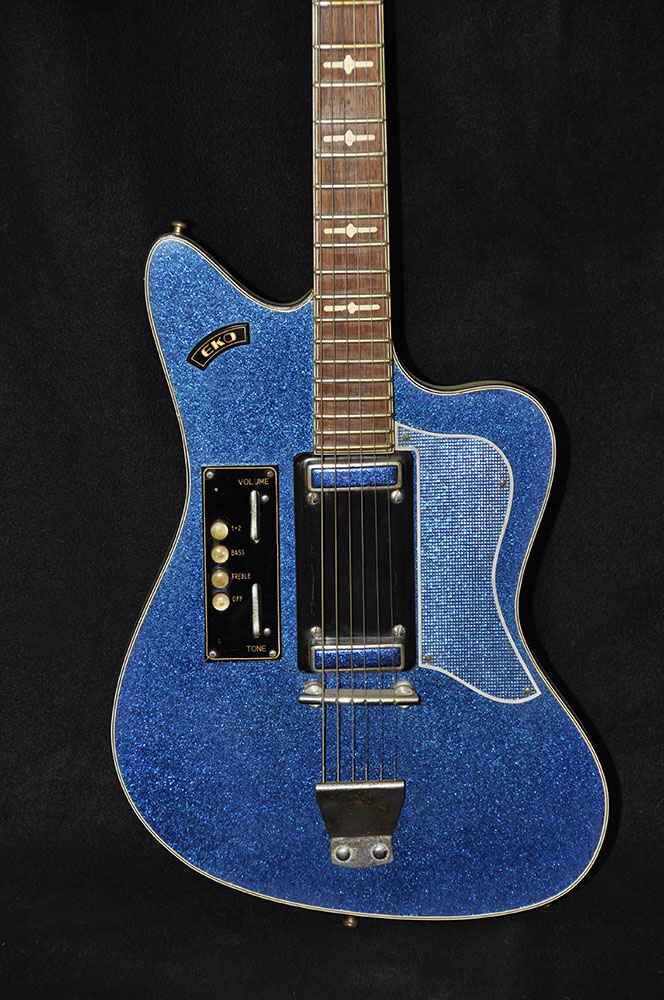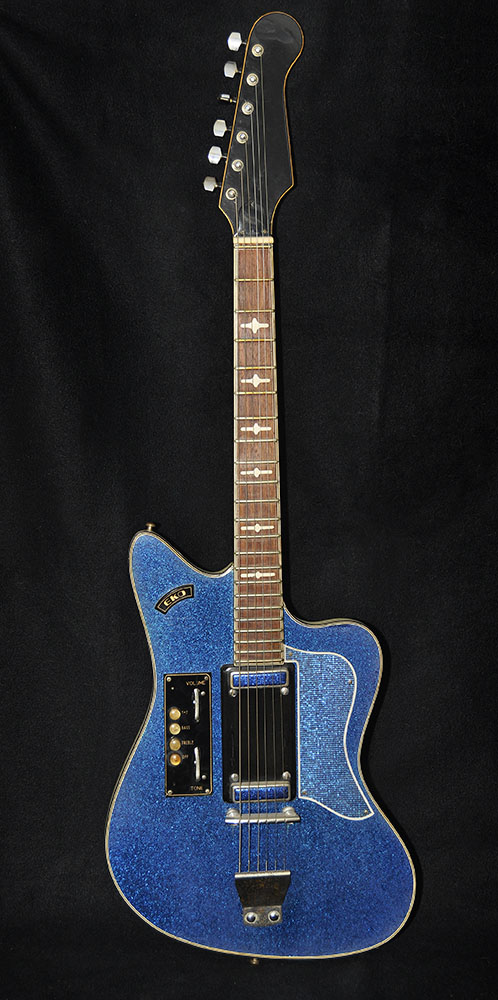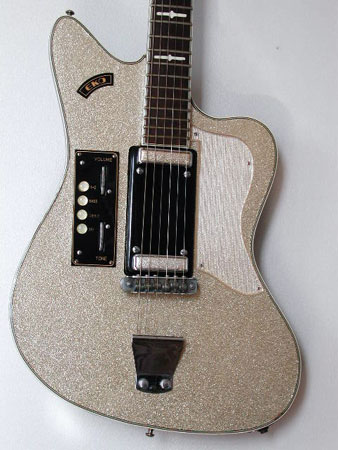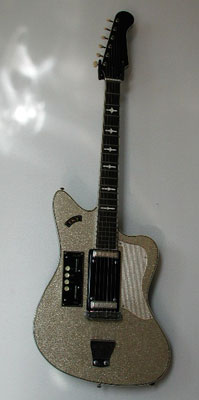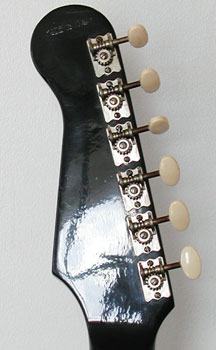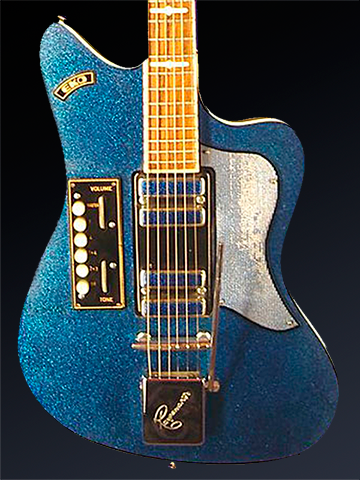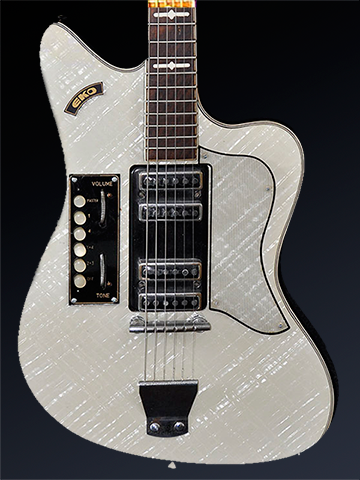Ekomaster Eko 400 early 61
Fender.ish headstock with six-in-line machineheads
Emerald Eko 400 2
So-called Ekomaster guitars with celluloid covered pickups are mostly located in Britain, France, Germany or Benelux. They are not common at all in Italy. In USA they are extremely rare. And have become even rarer since our revered webmaster let this all original Eko 400 be shipped from America to Rome.
There is no evidence any Eko logo was ever put on the body. The Emerald brand belonged to some import company Oliviero Pigini found through accordion connections in America before meeting an agreement with LoDuca Bros. This is a really old guitar, maybe from late 1960.
As for all early Eko models fretting is jumbo size, a rather inusual feature in the 60‚s, and is made of a strangely wear resistant alloy. There is more fret life left after years of abuse than on an Asian Stratocaster bought new last month. Anybody seeing a vintage Eko 400 for the first time believes the instrument has been newly refretted.
The new headstock is a sort of elongated Fender shape that is as black as a Gibson peghead can be. Most European solid body guitars made in the years 1961 to 1966 featured such black headstocks with 6-in-line tuners, and only European guitars did. One more of the many trends launched by the Eko 400.
Italiano
Le (cosidette) Ekomaster che hanno i pickups coperti di plastica si vedono sopratutto in Gran-Bretagna, Francia, Germania o Benelux ma sono veramente rare in Italia. In USA sono ancora piùrare, e lo sono diventate ancora di più da quando il nostro onorato webmaster si è fatto spedire dall’America a Roma questa 400 tutta originale.
Niente logo Eko, non se ne vede nemmeno la traccia. Il marchio Emerald apparteneva a qualche importatore che Oliviero Pigini aveva trovato attraverso la connessione fisarmonica in USA, prima che venne stabilito l’accordo con LoDuca Bros. Si tratta di una chitarra veramente vecchia, forse della fine del 1960.
Come per tutte le primissime Eko i tasti sono jumbo, cosa assai insolita negli anni 60, e sono fatti d’una lega stranamente refrattaria all’usura. Dopo anni di abuso la tastiera risulta più bella che su una Strato asiatica comprata nuova il mese scorso. Chi vede per la prima volta una vecchia 400 pensa che la tastiera sia stata rifatta.
La nuova paletta ha una forma alla Fender allungata, ma nera come solo una paletta Gibson può esser nera. Quasi tutte le solidbodies europee degli anni 1961-1966 sono state fatte con una palette di questo tipo, a finitura nera con 6 chiavette allineate. Ancora una delle tante mode lanciate dalla Eko 400.




